The history of erecting the monument goes back to the time of World War I: the Parliament decided in Article 8 of 1917 that a memorial should be erected in every settlement of the country to the local soldiers who died in the World War. Active students of the Pázmány Péter University (predecessor of today's ELTE) also joined the initiative in 1919: they started a collection for the memorial of their comrades who died a heroic death. In the hyperinflation that followed the war, the amount, unfortunately, became devalued, and it was not until more than a decade later that they came close to the realisation again. At that time, the management of the university was also behind the case, and the statue committee, chaired by rector Dr Alajos Wolkenberg, selected the place for the monument in 1928: it secured a place for it on the wall section where the central building meets the neighbouring University Church.
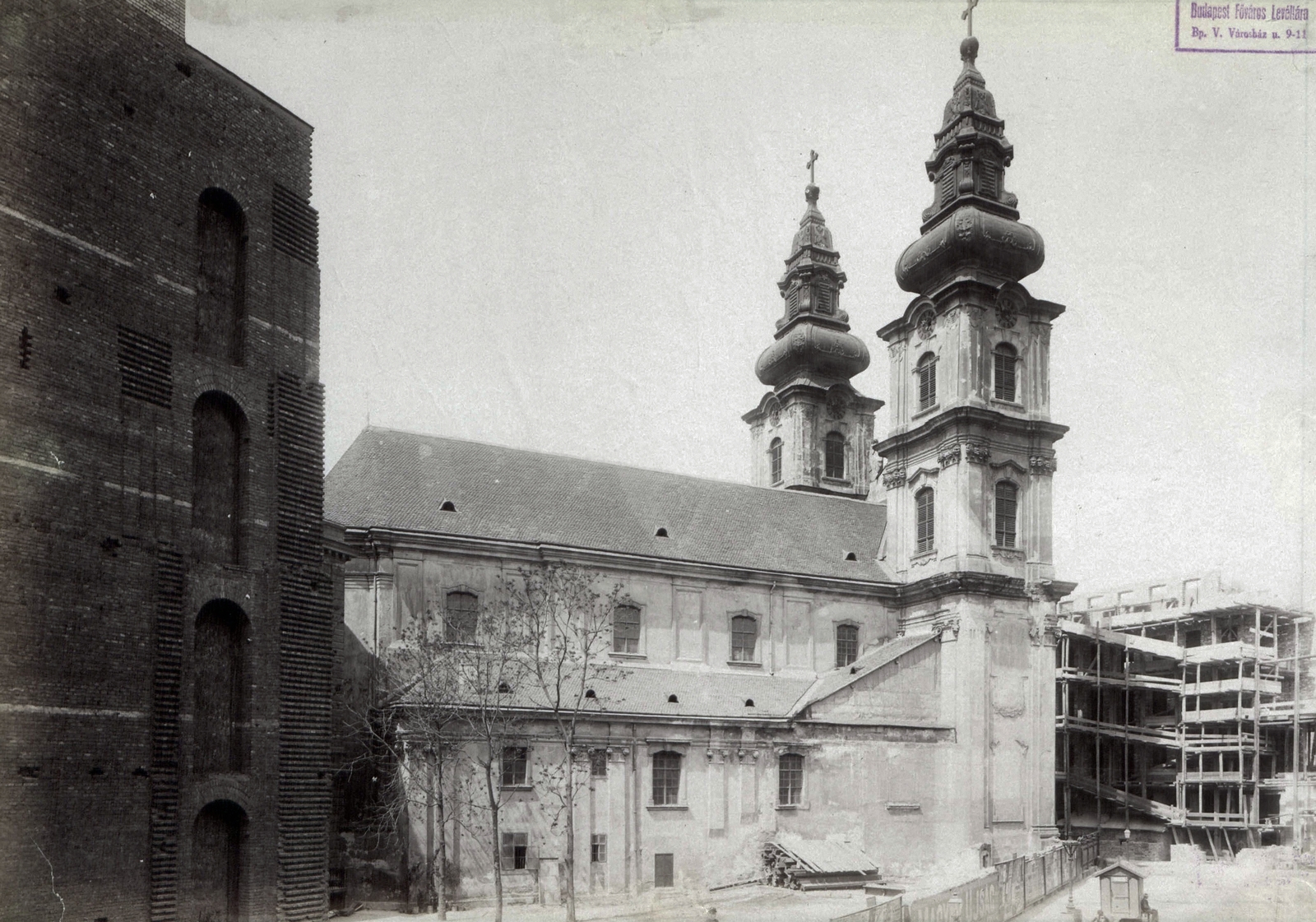
The University Church even before the construction of the university, in 1894 (Source: Fortepan/Budapest Archives, Reference No.: HU.BFL.XV.19.d.1.07.076)
György Zala was entrusted with the work, but since the curved surface also required an architectural frame, Jenő Lechner was asked to design it. Both were experienced in the field of monuments: Zala shaped the statues of the central group of the Millennium Monument, i.e., the archangel Gabriel standing on the column, as well as the seven leaders grouped around the column's foot, and his talent is also praised by the Honvéd statue in Buda Castle. The great politicians of his time were also commemorated with his works on Kossuth Square: the equestrian statue of Gyula Andrássy was placed at the southern end of the Parliament, and that of István Tisza at the northern end. He also modelled Queen Elizabeth, whose statue was originally located in Pest, in front of the Inner City Parish Church, but today it can be seen in Döbrentei Square in Buda.
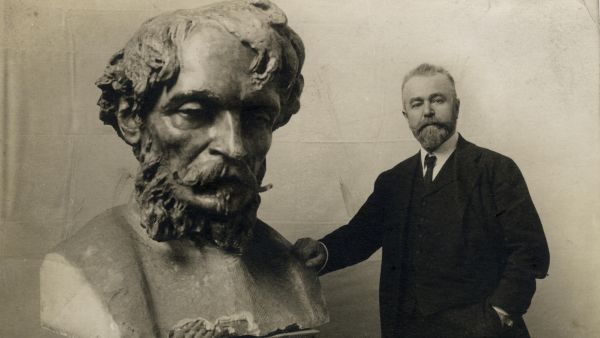
György Zala with the head of the upcoming Andrássy Statue (Source: Hungarian National Museum Historical Photo Department)
Jenő Lechner was twenty years younger and started his career much later, but the design of monuments has always played a major role in his work. Before World War I, they tried to renew cemetery art in the framework of a joint venture with the sculptor Richárd Füredi, and achieved good results, for example, in the tender announced for the tomb of Ferenc Rákóczi II in Kassa. The memorial to Mór Jókai intended for the Fiumei Road Cemetery was also designed through the success of a tender. In addition to his talent, from the second half of the 1920s, he also received commissions through his professional and political connections: from 1927, on behalf of the Ministry of Culture, he managed the construction of the Memorial Stone of Heroes, which was finally placed in front of the Millennium Monument in 1929.
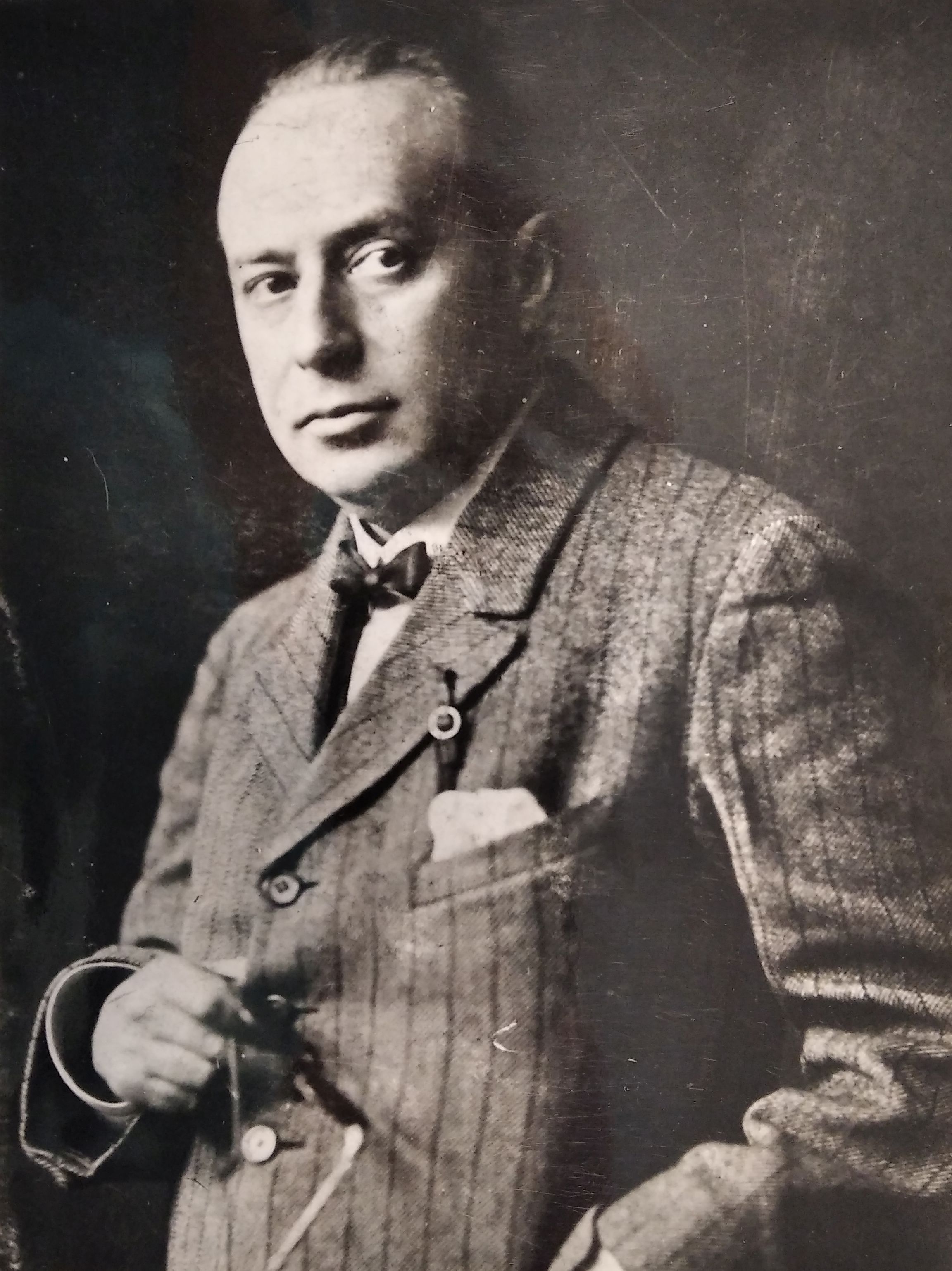
Jenő Lechner, designer of the architectural framework of the monument (Source: Kiscelli Museum of Budapest History Museum)
The work of Zala and Lechner met symbolically at the Heroes' Square, and perhaps this also contributed to the fact that the university also asked them to design its own monument. Already that year, Lechner created several versions of the plan, which were quite similar: he placed a huge stone column in front of the building, in the middle of which he deepened a large, semi-circular niche as a gate. He designed the monument according to the classical architectural structure: it stands on plinths at the bottom and is closed by a cornice at the top. The individual design versions differ in the form of the upper closure: in some cases, a string of leaves sprouting from a capstone runs along the cornice, in other cases, the cornice is even complemented by a so-called dentil decoration. These early designs were still in the classicist style, which defined domestic architecture in the first half of the 19th century. Lechner saw the Reform era as an example to be followed, he believed that the country-building activities of his predecessors a hundred years earlier could also serve as a model for the politicians of his own time.
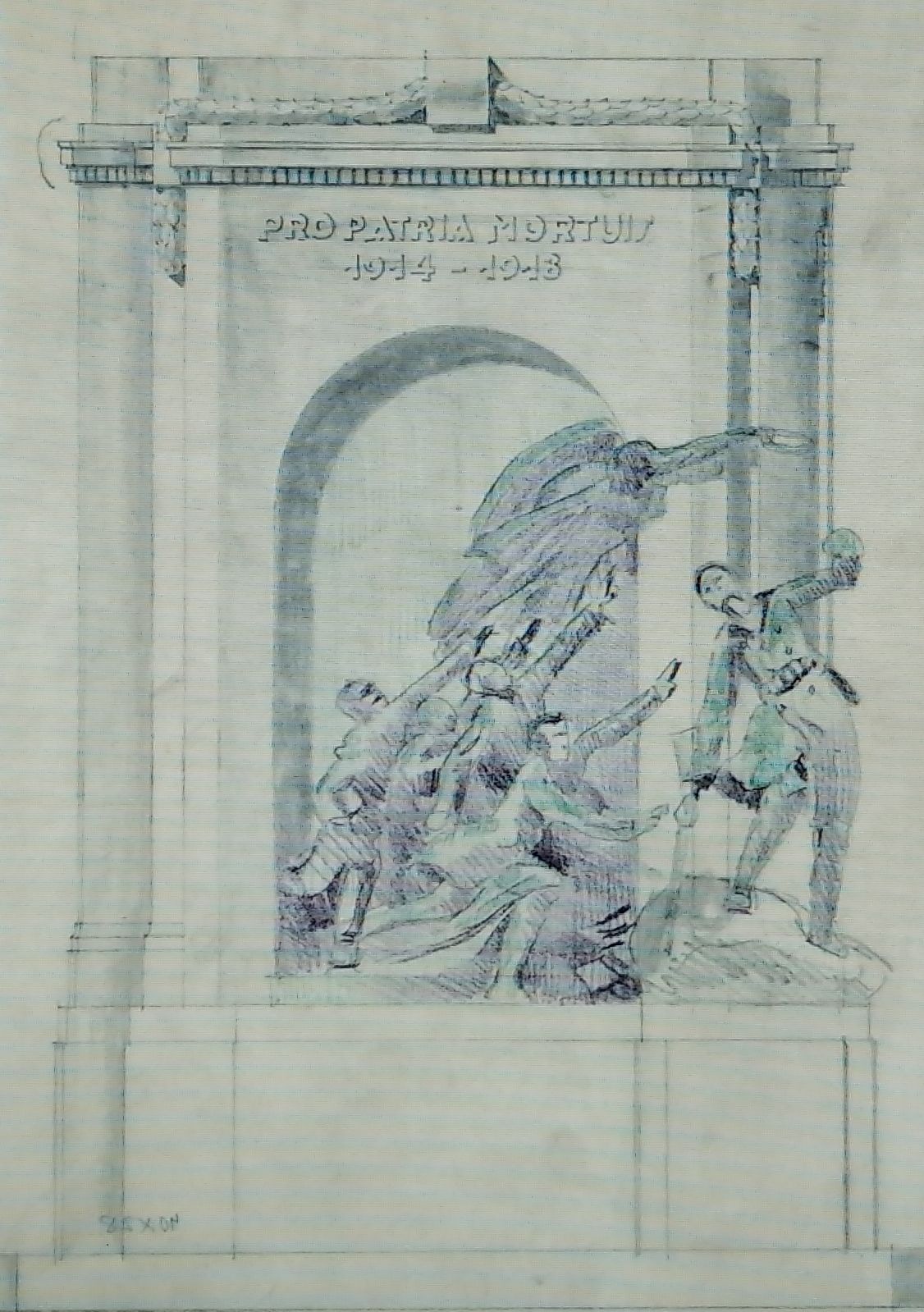
An early version of the monument's plan (Source: Kiscelli Museum of the Budapest History Museum)
In the end, however, he changed the style of the monument, since it was not a stand-alone work, he had to take into account the Baroque lines of the church and the Neo-Baroque facade of the central building of the university: so he drew the final plans in Copf style which is closer to the Baroque. The eight-metre-high architectural frame became two-layered: the surface of the front part has the same undulations as the facade of the church: its edges stand forward, the middle steps back. Compared to the early plans, he transformed the cornice into a much more protuberant one, which is complemented by a dentil decoration at the bottom.
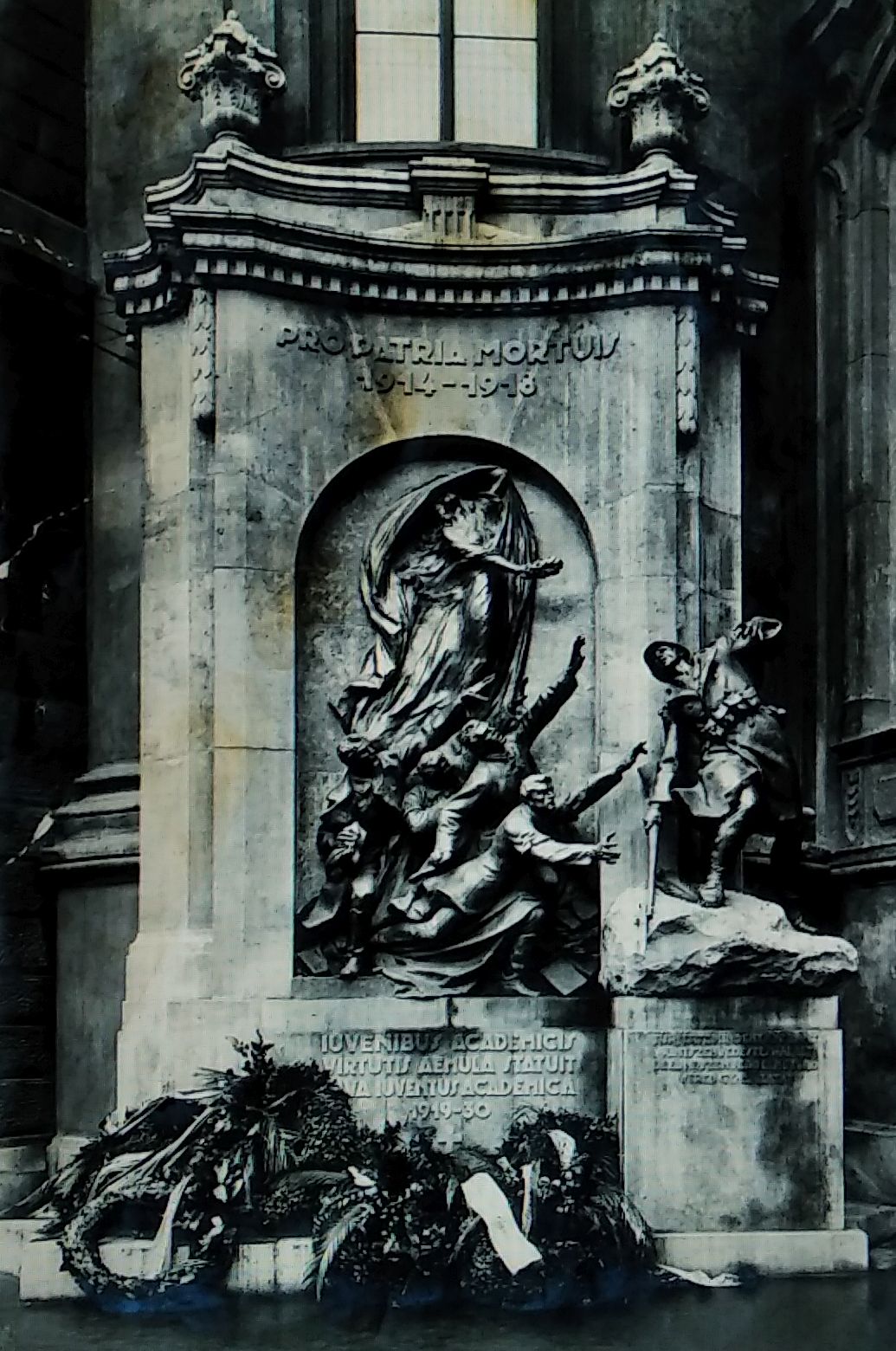
The monument after its inauguration (Source: Kiscelli Museum of Budapest History Museum)
The back layer is narrower, but also higher, so its cornice becomes visible, which is simpler than the former, although a capstone rises from the middle. On two sides of this, the strings that are so characteristic of the Copf style extend, which run along the top of the front layer and hang down on the sides as well. The strings thus connect the two layers, although only their ends are actually visible due to the thick ledge. Lechner crowned the corners of the monument with stone vases decorated with leaves, ending in a spiral line, on which he also placed peaked covers. He gained great expertise in the design of the Copf style because during these years the National Committee of Monuments assigned him the task of restoring one of Hungary's famous monuments, the Old Buda Parliament House located in the Castle.
Above the gate of the monument, as well as on the plinth, there is a Latin inscription:
"Pro Patria Mortuis 1914-1918.
Juvenibus academicis virtutis aemula statuit viva juventus academica. 1919-1930."
Meaning:
"For those who died for the country 1914-1918.
It was made for the youth of the University by the living youth competing in virtue at the University 1919–1930."
The fourth verse of Mihály Vörösmarty's poem entitled Honszeretet (Patriotism) was written in smaller letters on the surface of the soldier's statue's pedestal:
"Endure everything that hurts, the suffering and the death, but do not experience, do not tolerate the dishonour of your blood!"
György Zala's memorial depicts a scene in which university students rush to the aid of a wounded soldier. He assembled the baroquely dynamic sculptural composition from huge, three-and-a-half-metre-high figures, which is made up of three parts: the upper part of the gate is filled by the personified female figure of the Genius, who holds a wreath over the young people. The relief figures of the university students running towards the soldier stand out slightly from the gate, but only their arms extend and become three-dimensional. The soldier, on the other hand, is already standing as an independent statue on the plinth placed on the right side of the monument.
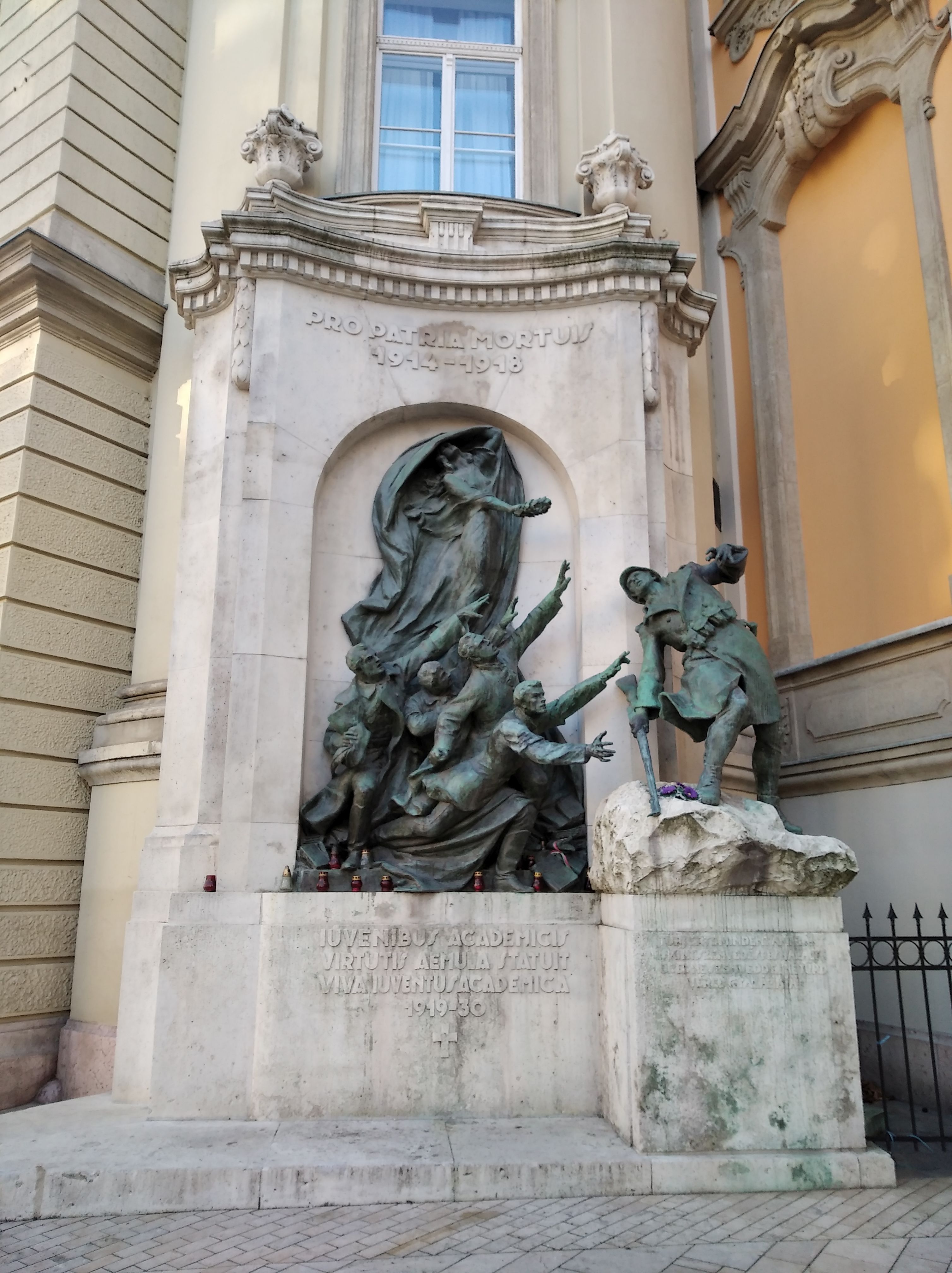
The monument nowadays (Photo: Péter Bodó/pestbuda.hu)
The statue of the university students and the soldier was completed in the first half of 1930 and erected on the site, but it was kept covered for months. In the fall of the same year, the Genius followed them, and the final monument could thus be ceremonially inaugurated on 1 November 1930. The event was held in the adjacent University Church, where Alajos Wolkenberg held the introductory mass, and then the choir performed Ferenc Liszt's Before the Battle. The series of speeches was opened in style by a university student, István Eszterhás-Kreisz, who then asked Archduke Joseph for permission to unveil the monument. After his short speech, the red-white-green shroud fell from the monument, whose message was summed up by the rector in the most touching way:
"They entered your gates with a thirst for science and education, and look how they rush out of them with the self-sacrificing dedication of their souls loyal to their country and duty. They came in good health and they go determined even to death. How much pleasure, gaiety, skill that radiated on them and how much will, certainty, hardness, that stormed in the anthem of their souls and under the feet of their troops, when they saw the brave and with him, the country surrendering."
Cover photo: Detail of the university's heroic monument (Photo: Péter Bodó/pestbuda.hu)

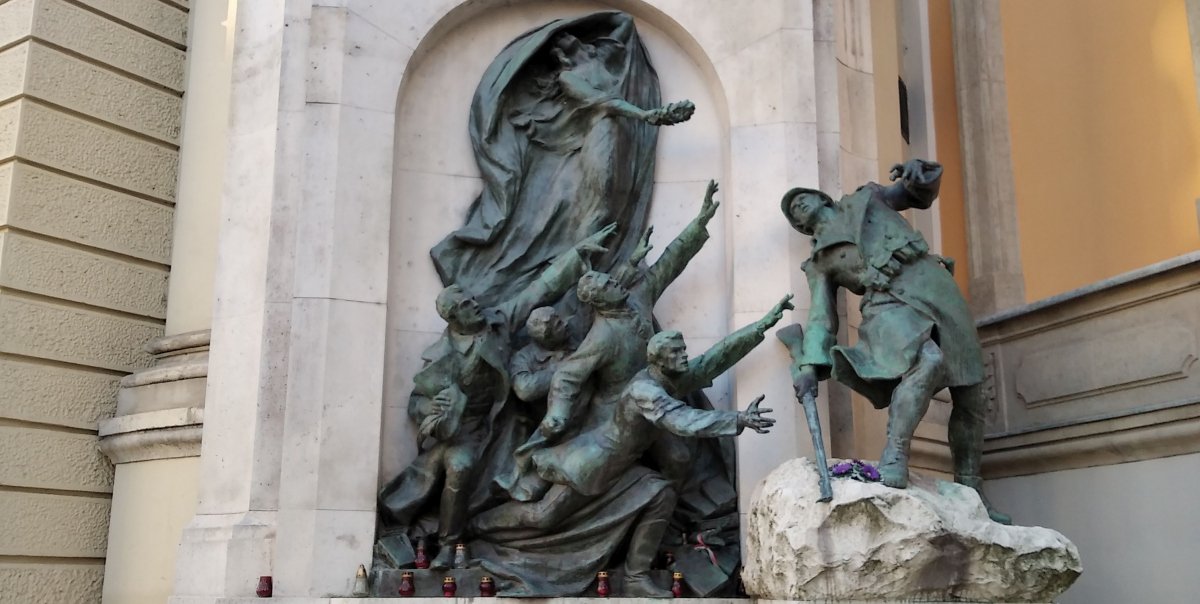
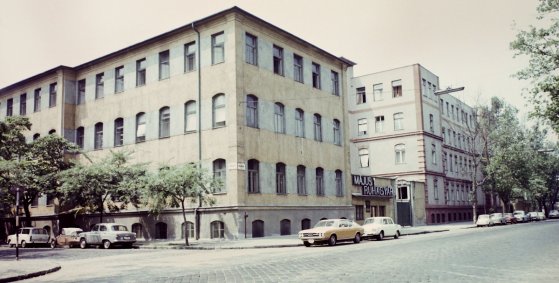
































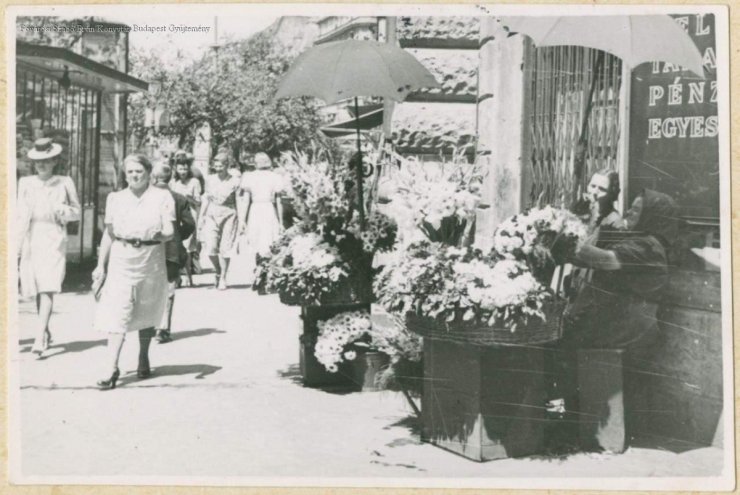
Hozzászólások
Log in or register to comment!
Login Registration